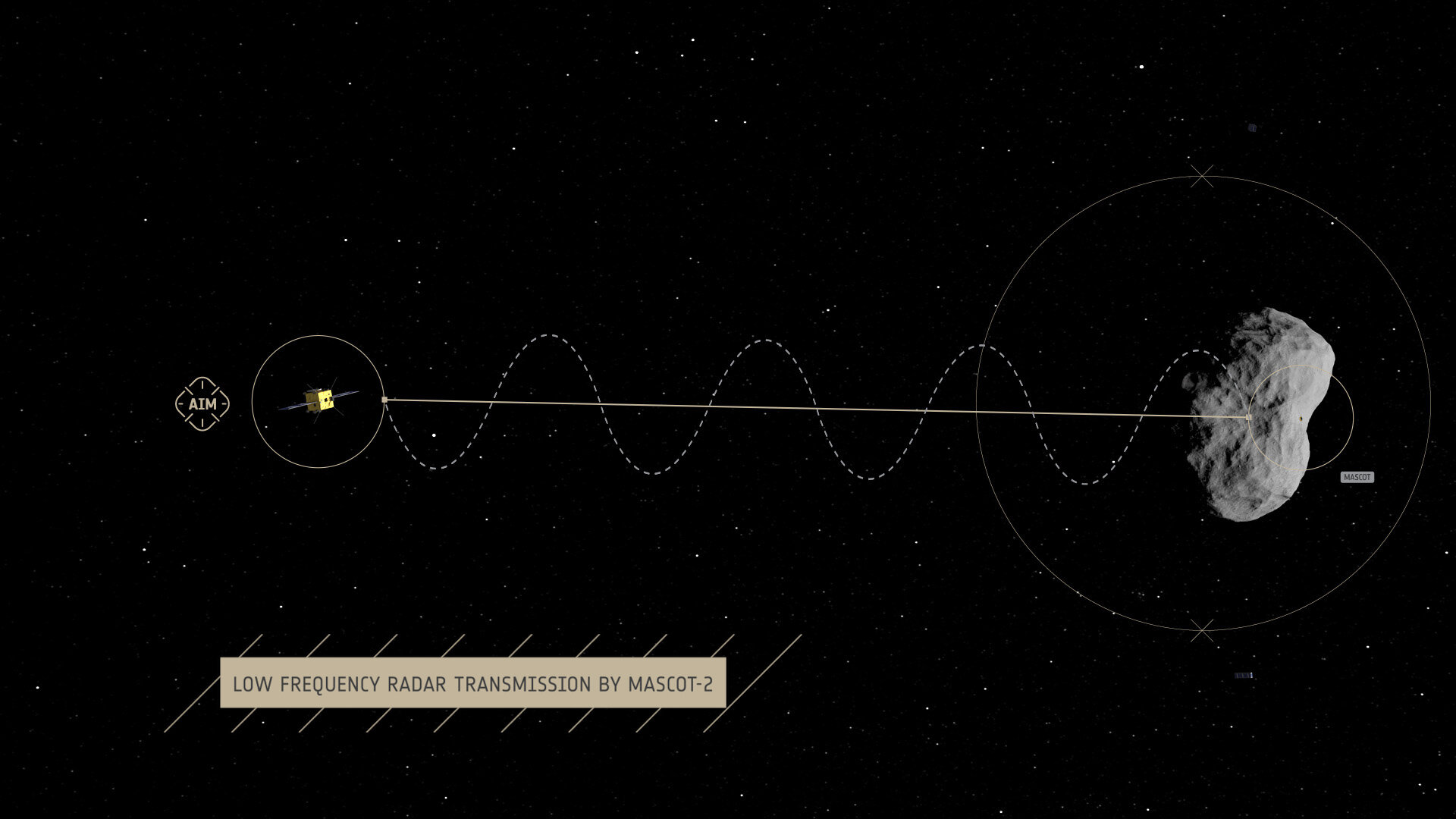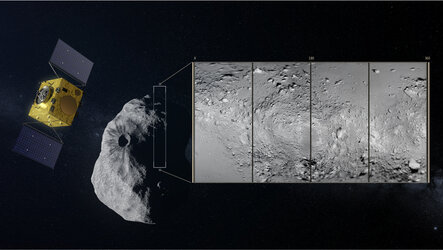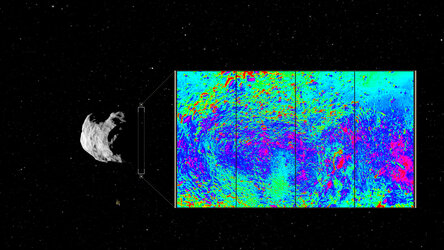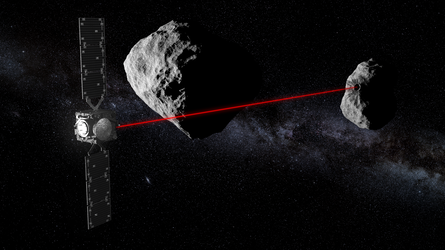LFR
The AIM bistatic Low-Frequency Radar (LFR) main goal is to obtain data on the asteroid internal structure, with a typical resolution of 30 meters. Both the main AIM spacecraft and the lander will carry an emitter and receiver of the LFR so that signals can be sent through Didymoon during full asteroid rotations.
During these measurements the geometry will change from the lander facing the main spacecraft to the lander and the main spacecraft being on opposite sides of the asteroid.
| Primary objectives (typical resolution of 30 m) | |
| P1 | To characterise the internal structural homogeneity of Didymoon to discriminate between the possibilities of the asteroid consisting of a monolithic structure versus several building blocks |
| P2 | To derive an estimate of the average complex dielectric permittivity of Didymoon, which is related to the mineralogy and porosity of the material |
| P3 | To determine the 3D structure of Didymoon, i.e. its deep layering, the spatial varying in density, the block size distribution and average permittivity |
| Secondary objectives | |
| S1 | To support asteroid mass determination and orbit characterisation by providing range measurements during and after descent of MASCOT-2 |
| S2 | To determine Didymoon's 3D structure after DART impact |
| S3 | To characterise the structura; homogeneity of Didymain |
| S4 | To investigate the subsurface of Didymain in occultation at a grazing incidence angle |
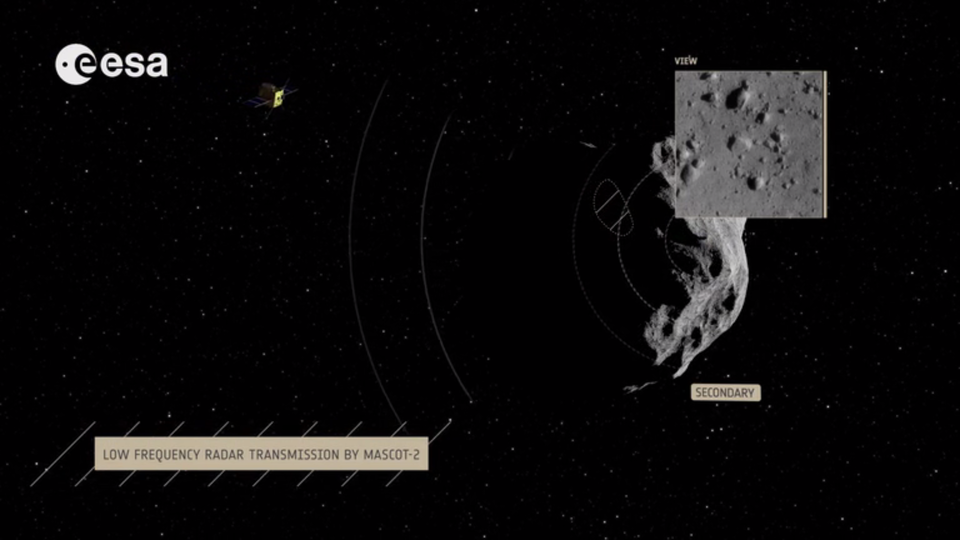
To achieve these objectives a shape, motion, and orbitography model with an accuracy of 10 m for the shapen and 100 m for the orbit of Didymoon will be needed. Dedicated trajectories of the spacecraft within a short range of the asteroid surface and a good geometry between lander and main spacecraft will be needed, especially for S3 and S4.


